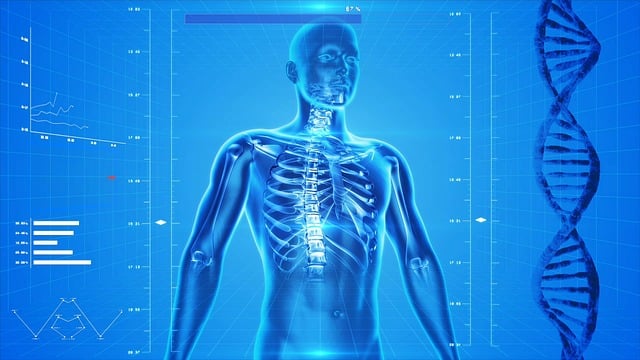Long-term chiropractic rehabilitation after car wrecks offers a specialized, holistic approach to healing. Chiropractors create personalized plans using gentle adjustments, exercises, and lifestyle guidance to restore function, enhance flexibility, and prevent future injuries, promoting recovery without medication or surgery. This method focuses on patient well-being, including mental health support, through regular check-ins and progress assessments for lasting results.
After a car wreck, proper long-term chiropractic rehabilitation is crucial for sustainable recovery. This comprehensive guide delves into the essential aspects of chiropractic care post-accidents, focusing on how it can alleviate pain and restore function. We explore understanding long-term chiropractic rehabilitation and its pivotal role in managing injuries from car crashes. Additionally, we highlight effective programs designed to foster a seamless transition back to daily life.
- Understanding Long-Term Chiropractic Rehabilitation
- The Role of Chiropractic Care After Car Wrecks
- Effective Programs for Sustainable Recovery
Understanding Long-Term Chiropractic Rehabilitation

Long-term chiropractic rehabilitation is a specialized approach designed for individuals who have suffered significant injuries, often as a result of traumatic events like car wrecks. After such incidents, the body undergoes immense stress and can take considerable time to heal, especially if there are complex joint dysfunctions or nerve damage. Chiropractic care in these cases goes beyond initial acute treatment; it focuses on long-term recovery to restore full functionality and prevent future complications.
This process involves a comprehensive plan tailored to each patient’s unique needs. Chiropractors employ various techniques such as gentle adjustments, therapy exercises, and lifestyle recommendations to promote healing and improve mobility. The goal is not only to alleviate pain but also to strengthen the body, enhance flexibility, and ensure patients can regain their independence without relying on ongoing medication or invasive procedures. For those who have been in car accidents, long-term chiropractic rehabilitation offers a promising route to recovery, helping them reclaim their lives and return to pre-accident levels of activity.
The Role of Chiropractic Care After Car Wrecks

Chiropractic care plays a significant role in long-term rehabilitation for individuals who have been involved in car accidents. After a car wreck, many people suffer from various types of injuries, including whiplash, back pain, and neck strain. Chiropractic professionals are well-equipped to address these issues through manipulative therapy, which involves adjusting the spine and joints to reduce pain and improve mobility. This hands-on approach is particularly beneficial for patients who may not respond positively to traditional medical treatments or pharmaceuticals.
Chiropractors focus on not just treating symptoms but also on restoring the body’s natural alignment and function. Long-term chiropractic rehabilitation after car wrecks involves a combination of adjustments, exercises, and lifestyle recommendations. This comprehensive approach ensures that patients regain strength and flexibility while learning preventive measures to avoid future injuries. As such, chiropractic care is often recommended as a holistic solution for those seeking long-lasting recovery from car accident-related traumas.
Effective Programs for Sustainable Recovery

Effective programs for sustainable recovery in long-term chiropractic rehabilitation after car wrecks are designed to address multiple aspects of a patient’s health and lifestyle. These programs often incorporate tailored exercise routines, manual therapy sessions, and education on posture and injury prevention. By combining these elements, chiropractors can facilitate a more comprehensive healing process that extends beyond the initial phase of acute care.
Sustainable recovery requires ongoing commitment and support. Chiropractors play a pivotal role in guiding patients through each step, from reconditioning the body to promoting mental well-being. Regular check-ins, progress assessments, and adjustments to the rehabilitation plan ensure that the program remains effective and aligned with the patient’s evolving needs. This personalized approach is key to achieving lasting results for those recovering from car wreck injuries.
Long-term chiropractic rehabilitation after car wrecks plays a pivotal role in sustainable recovery. By understanding the nuanced approach of this treatment method and its effectiveness, individuals can make informed decisions to navigate their journey towards full recovery. Integrating specific programs designed for sustained healing ensures not just physical restoration but also a return to an active, pain-free life.














